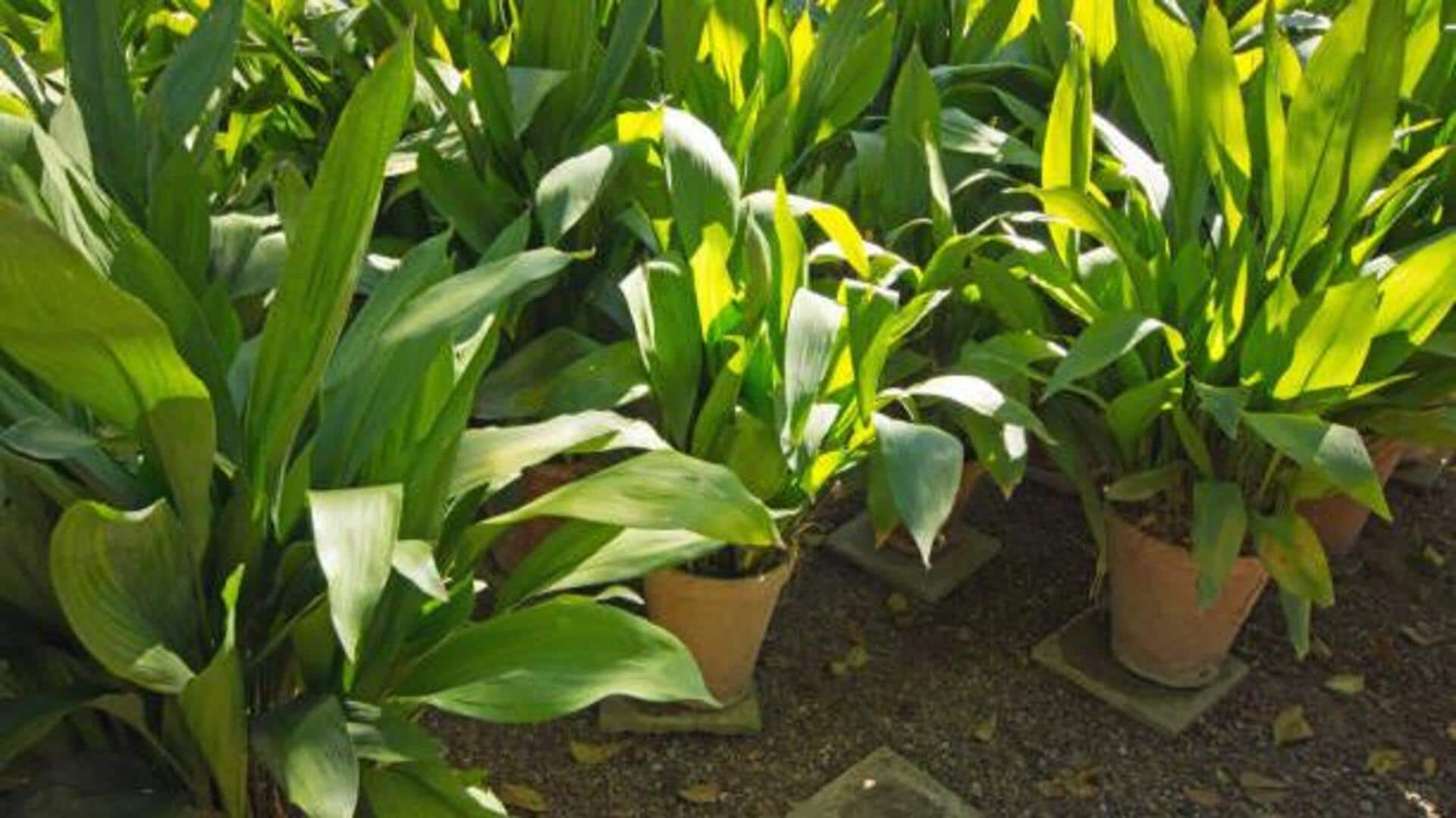
Cast iron plant: Tips for healthy growth
What's the story
Cast iron plants are famous for their resilience and low-light tolerance, making them an ideal choice for indoor gardening. Even though they are hardy, there are a few tips that can help your plants flourish even further indoors. By knowing their exact needs and setting the right environment, you can keep your cast iron plant healthy and vibrant. Here are some tips to do that.
Light needsc
Optimal light conditions
Cast iron plants love low to moderate light conditions. Direct sunlight can scorch their leaves, so place them where they get indirect light or partial shade. In case natural light is limited, you can use artificial lighting like fluorescent bulbs to provide the necessary illumination without harming them.
Watering tips
Watering techniques
These plants don't need to be watered that often. Let the top inch of the soil dry out between waterings to avoid overwatering, which can cause root rot. During winters, reduce the frequency of watering as the plant's growth slows down. Always use room temperature water for best results.
Soil preferences
Soil requirements
A well-draining potting mix is a must for cast iron plants. A mix with peat moss and perlite or sand does the trick, providing good drainage while holding enough moisture for the roots. Steer clear of heavy soils that hold too much water, as they can lead to rotten roots.
Climate needs
Temperature and humidity control
Cast iron plants flourish at temperatures between 60 degrees Fahrenheit to 75 degrees Fahrenheit (15 degrees Celsius to 24 degrees Celsius). They prefer moderate humidity levels but can adapt to lower humidity conditions of indoor environments. To keep humidity levels up, consider placing a tray of water near the plant or using a humidifier during dry seasons.
Feeding schedule
Fertilization practices
Fertilize cast iron plants sparingly during their growing season from spring through summer using a balanced liquid fertilizer diluted to half strength every six weeks. Avoid fertilizing during fall and winter when growth naturally slows down, as excess nutrients may harm the plant rather than benefit it.